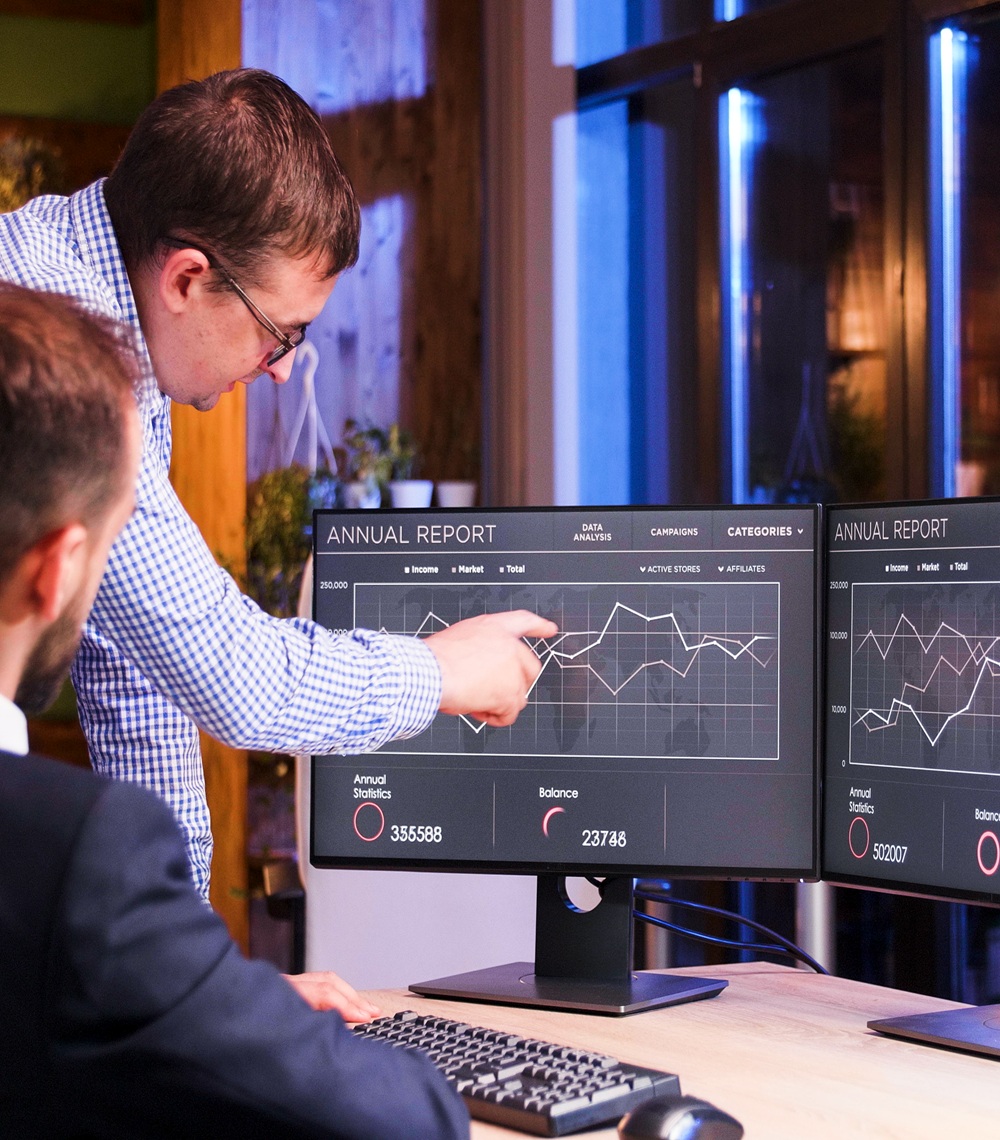
Prediction is on the rise, it reinvents businesses, industries and runs the world. Predictive analysis is the process of discovering meaningful and interesting patterns in data. It drives manufacturing, healthcare, government, and other sectors and helps firms operate more effectively by predicting the behavior of the market. Predictive analytics algorithms automate the process of discovering patterns from data and appear to be insightful for future events. The basic process of this would be:
- Evaluating existing data to understand statistical patterns
- Creating a set of guidelines from the patterns that explain how to use them.
- Making predictions about events by running fresh data through the model
It is something that everyone is doing!
- According to both Accenture and Forrester, PA adoption has more than doubled in recent years
- Allied Market Research reports project the PA market will reach a USD 35.45 billion by 2027, growing at a CAGR OF 21.9 percent from 2020 to 2027
- According to a Salesforce survey, PA has the fastest growing rate of all sales technology trends
- High-performing sales teams are substantially more likely than underperformers to already be using PA
Is predictive analytics a difficult concept to grasp?
Not at all! Predictive analytics is a form of data analytics used to make future predictions based on historical data and analytics techniques like machine learning and statistical modeling.
Predictive analytics can provide high-precision future insights. With the help of advanced models and tools for predictive analysis, any business can now utilize historical and current data to predict patterns and trends of the future accurately.
A wide range of methods and technologies like data mining, big data, machine learning, statistical modeling, and assorted mathematical processes are used for predictive analytics.
What sets predictive analytics apart from other types of analytics?
Predictive analytics is data-driven, which means that algorithms derive important model properties from the data rather than from analyst assumptions. Identification of variables to include in the model, weights or coefficients in the model, parameters that define the model, and model complexity are all examples of induction processes.
Algorithms for predictive analytics automate the process of extracting patterns from data. The models' form, as well as their coefficients or weights, are discovered by powerful induction algorithms. Decision tree algorithms, for example, learn which candidate inputs best forecast a target variable as well as which values of variables to utilize in projections. Other algorithms can be tweaked to search for the best collection of inputs and model parameters, employing exhaustive or greedy searches. The variable is contained in the model if it helps reduce model error. Otherwise, if a variable does not contribute to the reduction of model error, it is removed.
Application of predictive analytics in the real world
Predictive analytics is now widely used by businesses to better target customers and produce better operational results. It can be found in a variety of industries, including marketing, manufacturing, real estate, software testing, healthcare, and many more. Predictive analytics use diverse technologies such as Big Data Analytics, IoT, Cloud, and AI in the current data-driven and intelligence age. Artificial intelligence has helped make predictive analytics extremely efficient by analyzing large amounts of data.
To predict future outcomes, predictive analytics models are incorporated into applications and systems. Here are some instances of real-world predictive analytics projects:
1. Detection of fraud
Predictive analytics examples abound as cybersecurity becomes more of a worry. The most crucial is the detection of fraud. To determine dangers, these models can discover abnormalities in the system and detect unexpected activity.
Experts can, for example, supply past data on cyberattacks and system dangers. When the predictive analytics program detects something similar, it will inform the relevant personnel. It will prevent hackers and bugs from gaining access to the system.
2. Predicting purchasing habits
Predicting purchasing behavior in the retail industry is one of the most common applications of predictive analytics. Organizations use the tools to discover everything they can about their clients. Advanced analytics are used by businesses to determine buying trends derived from previous purchase history.
Walmart is a good illustration of this. It made advantage of early data to figure out how people buy in certain situations. To forecast customer purchase trends, small online sellers can use predictive analytics in their point-of-sale systems. It aids in gaining a better understanding of clients on a more intimate level.
3. Dealing with cart abandonment issues
This use of predictive analytics is extremely popular among retailers. Cart abandonment is a major problem. Models, on the other hand, can anticipate how likely a client is to depart the basket based on previous activity.
By entering the data into a model of purchases made and cart abandonment, for example, the model can forecast how many visitors will abandon the cart. It will also give businesses information on each customer's likelihood of purchasing or abandoning a cart based on previous visitors to the store.
4. Diagnosis in the medical field
This predictive analysis function is especially beneficial to the healthcare industry. To understand a patient's history and current ailment, health data is essential. Predictive analytics models aid in illness knowledge by delivering a precise diagnosis based on historical data.
Predictive analytics assists clinicians in determining the core cause of ailments by using specific health parameters. It provides them with timely data so that they may begin working on remedies as soon as possible. The spread of detrimental health impacts can be halted with the use of predictive analytics algorithms.
5. Upkeep the equipment
Healthcare, manufacturing, and other industries that require planned equipment maintenance benefit from predictive analytics models. Accidental equipment failure can endanger people's lives and cost a corporation a lot of money.
Manufacturing units, for example, can supply data to understand when equipment requires repair by integrating IoT with that equipment. The machinery would then inform the people, and maintenance could be performed to avoid unplanned and unintentional malfunctions.
6. Recommendation of content
Content recommendation is one of the most accessible and obvious predictive analytics examples. Entertainment firms can forecast what customers want to view based on their past viewing habits using algorithms and models.
"What firms apply predictive analytics?" one might wonder. Netflix is the most pertinent response. Predictive algorithms are used by the entertainment firm to recommend material to customers based on keywords, ratings, genre, and other factors. For forecasting the user's behavior, the intelligent system employs cutting-edge analytics.
Types of predictive analytics models
With predictive analytics, companies can identify and capitalize on patterns present in information to spot potential risks and opportunities. Models can be developed to achieve various tasks, for example, determining the relationship between various behavior factors. In addition, they can be used to assess the likelihood of the potential or threat posed by a specific set of circumstances, which can guide informed decision-making across different types of supply chain and procurement activities.
Several predictive data models have been developed in recent years. Each has its own set of requirements and applications. The models that analytics professionals employ to provide valuable insights are listed below.
1) Forecast models
A forecasting model can be among the most popular analytical models that predict the future. It deals with metric value prediction by estimating the value of new data based on previous data learnings. It is commonly employed to calculate numerical values from historical data even when no value can be found. One of the most significant benefits of predictive analytics lies in its capacity to input several parameters. This is why they are among the most popular predictive analytics models currently in use. They are employed in various businesses and industries. For instance, a call center can determine the number of support calls it will receive during the day, or a shoe store can estimate how much inventory it will need to sell in the coming sales season with forecast analytics. Forecast models are top-rated because they can be highly versatile.
2) Classification models
The most popular predictive analytics model is the classification model. They work by categorizing information by using data from the past. They are employed in various industries because they are easily retrained with new data and comprehensively analyzed when solving questions. Classification models are used in various industries, including retail and finance, which is why they are so popular compared to other types of models.
3) Outliers Models
The forecast and classification models use historical data. The outliers model deals with using anomalous data entries in the dataset. As the name suggests, anomalous data is different from usual. It is used to identify anomalous data either by itself or with different kinds of data. Outlier models are beneficial in detecting anomalies and saving companies thousands of dollars, specifically to identify frauds in finance and retail. Since a fraud incidence is an exception from the normal, an outlier model is more likely to anticipate the likelihood of it occurring. For instance, when one spots a fraudulent transaction, an outlier model will be able to determine how much money was lost and the location of the transaction, the purchasing history, the time of purchase, and the type of purchase. Therefore, outlier models are highly valued due to their connection to anomaly data.
4) Time Series Model
This model is focused on data in which time is the primary input parameter. The model operates by using various numbers of data points (taken from historical data) to construct an underlying numerical measure that can identify trends within a specific time.
Organizations need a time series predictive analytics model if they want to understand how a specific variable changes over time. For instance, businesses can forecast the closing price of stock each day, predict product sales in units sold every day for a store and foretell the average price of gasoline for a day or a month. It is a time series model that is superior to conventional methods for formulating the rate of growth of a variable since it can forecast for several regions or projects in a single timeframe or focus only on a specific area or project based on the company's needs. Additionally, it considers other factors that can affect the variables, such as seasons.
5) Clustering Model
The clustering model collects data and divides it into groups based on common characteristics. Separating data into multiple data sets based on certain attributes is highly beneficial in specific applications like marketing. For instance, marketers can split a prospective client base by common characteristics. It is based on two kinds of clustering, soft and hard clustering. Hard clustering classifies each data point as being part of the data cluster or not. In contrast, soft clustering assigns a probability to data when joining a cluster.
How to get started with predictive analytics
Do businesses want to use predictive analytics in their processes? To begin, it requires completing a few steps:
- Establish a business Goal: Every PA project begins with the establishment of a business goal. What exactly is a business trying to anticipate, and how will they use the information once they have it?
- Collect information: The next stage is to start extracting data from multiple sources, such as online archives, databases, and spreadsheets after having a clear purpose or target in mind. Before analysis, it is vital to ensure that all data has been cleansed.
- Conduct analysis: Once businesses have their data prepared, they will be able to run various predictive analytics models against it. Choose the right techniques for the job based on the application — for example, outlier evaluation for fraud detection, and so on.
- Create models: While predictive analytics software solutions make it simple to create analytical models, having the expertise of a data analyst and an IT specialist to deploy and refine models is beneficial. The preliminary findings of a good working prototype project can be highly encouraging, and they may start to impact company choices right away.
- Path to a product: Even the strongest predictors will be useless without users and stakeholders adopting them. Prototypes should be integrated into decision-making workflows to assess performance, reliability, and return on investment. The results of this testing period will be crucial in determining which models to refine further and push toward complete automation.
The final word…
A dramatic change in the creation and storage of information has been brought about by predictive analytics. In the future, predictive analytics models will play crucial roles in business processes due to the enormous economic value they create. The benefits they provide businesses (both private and public) are immense. By using predictive analytics, companies can act proactively across various tasks. The predictive models of analytics may prevent bank fraud, prevent disasters for the government, and create eye-catching advertising campaigns growing to be an essential asset hereinafter.
































